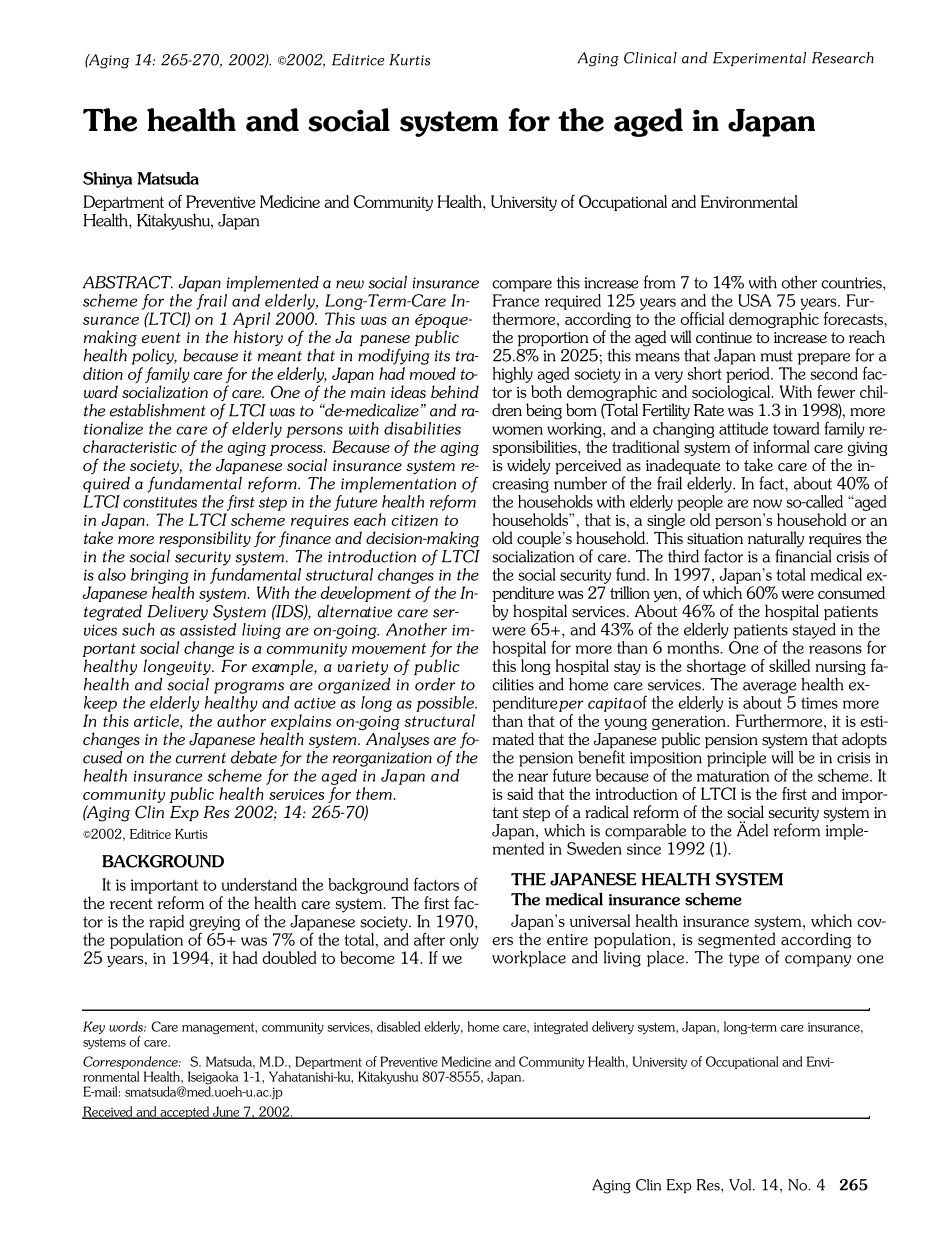(Aging 14: 265-270, 2002). ©2002, Editrice KurtisAging Clin Exp Res, Vol. 14, No. 4 265ABSTRACT. Japan implemented a new social insurancescheme for the frail and elderly, Long-Term-Care In-surance (LTCI) on 1 April 2000. This was an époque-making event in the history of the Ja panese publichealth policy, because it meant that in modifying its tra-dition of family care for the elderly, Japan had moved to-ward socialization of care. One of the main ideas behindthe establishment of LTCI was to “de-medicalize” and ra-tionalize the care of elderly persons with disabilitiescharacteristic of the aging process. Because of the agingof the society, the Japanese social insurance system re-quired a fundamental reform. The implementation ofLTCI constitutes the first step in the future health reformin Japan. The LTCI scheme requires each citizen totake more responsibility for finance and decision-makingin the social security system. The introduction of LTCIis also bringing in fundamental structural changes in theJapanese health system. With the development of the In-tegrated Delivery System (IDS), alternative care ser-vices such as assisted living are on-going. Another im-portant social change is a community movement for thehealthy longevity. For example, a variety of publichealth and social programs are organized in order tokeep the elderly healthy and active as long as possible.In this article, the author explains on-going structuralchanges in the Japanese health system. Analyses are fo-cused on the current debate for the reorganization of thehealth insurance scheme for the aged in Japan andcommunity public health services for them.(Aging Clin Exp Res 2002; 14: 265-70)©2002, Editrice KurtisBACKGROUNDIt is important to unde...


